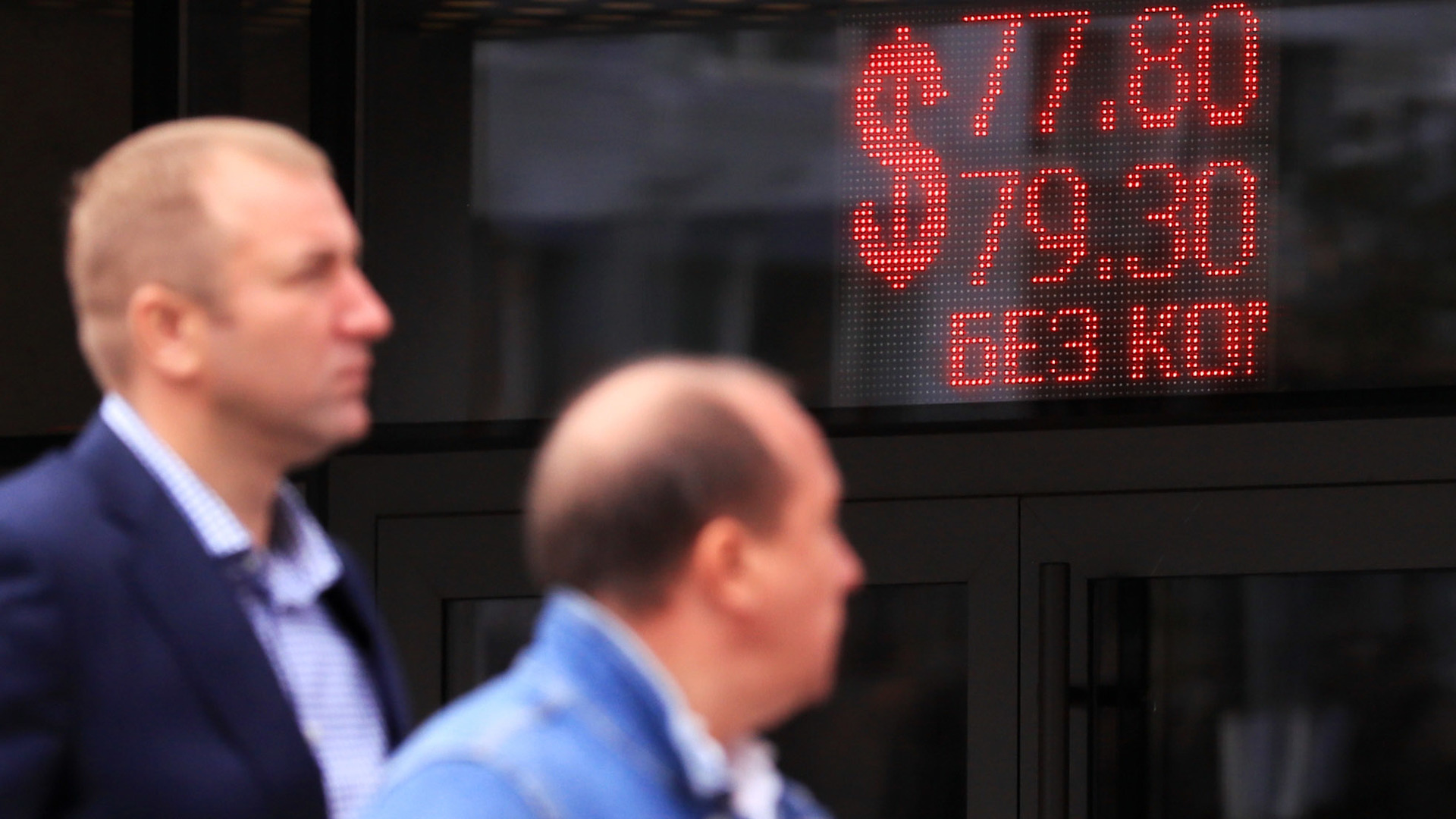On Monday, September 28, the Russian currency shows weakening on the Moscow Exchange.
During the trades, the dollar grew by 1% and for the first time since April 2 it reached 79 rubles.
At the same time, the euro rate also rose by 1% - up to 91.9 rubles.
The last time a similar indicator could be observed back in early 2016.
The official exchange rate of the Central Bank on September 29 was set at 78.67 rubles per dollar and 91.48 rubles per euro.
“A sharp weakening of the ruble began after Azerbaijan announced a partial mobilization.
The military aggravation between Azerbaijan and Armenia has become a new risk factor for the Russian currency, ”Oleg Bogdanov, a leading analyst at QBF Investment Company, told RT.
On Sunday, September 27, it became known about the renewed armed clashes between Armenia and Azerbaijan in the Nagorno-Karabakh region.
The parties blamed each other for the increase in tension.
After that, in both states, it was decided to impose martial law, which negatively affected investor sentiment.
In addition, the foreign exchange market players are still alarmed by the political instability in Belarus, as well as the possibility of increasing sanctions pressure.
Artyom Deev, head of the analytical department of AMarkets, spoke about this in an interview with RT.
“Investors fear the introduction of new sanctions in connection with the case of Alexei Navalny.
Proposals to introduce restrictions against Russia are increasingly being heard not only from the United States in connection with the approaching presidential elections, but also from the EU leadership, "Deyev said.
Meanwhile, significant sanctions against Russia are unlikely to be imposed in the near future.
This point of view in an exclusive interview with RT was expressed by the head of the Accounts Chamber, Alexey Kudrin.
“I hope we don't move to some other level of restrictions.
Most likely, we will see some kind of nibbling - just like it has been recently.
Indeed, in the end, other countries, our partners, who are imposing restrictions, may also suffer from the sanctions.
Therefore, let's say, everyone has decided not to cross some kind of invisible line, ”Kudrin explained.
According to experts, additional pressure on the Russian currency was exerted by a sharp decline in world oil prices.
Thus, at the Monday trading, the price of Brent crude on the ICE exchange in London dropped by almost 1% - to $ 42 per barrel.
According to Artyom Deev, the increase in the number of cases of coronavirus in the world risks turning into the introduction of new quarantine restrictions in a number of countries.
Against this backdrop, investors fear that global oil demand will recover much more slowly than previously expected.
However, according to Alexei Kudrin, even in the context of the second wave of coronavirus, oil prices will not fall below $ 40 per barrel.
“Now they are more and more boldly about this.
The vaccine has already begun to be sold, and we have learned to react faster from the point of view of medicine.
That is, the consequences of the second wave, even if it is very strong, will be less.
Therefore, governments will impose fewer restrictions.
In this sense, the oil price will not drop to the values it was in the spring.
Not up to $ 20 a barrel.
Moreover, taking into account the validity of the OPEC + agreement, I think that prices will remain above $ 40, ”the head of the Accounts Chamber noted.
© Anton Denisov / RIA Novosti
According to experts, the weakening of the ruble is still holding back the actions of the Bank of Russia.
Recall that to stabilize the exchange rate from March 10, the regulator began to proactively sell foreign currency in the domestic market.
Thus, the Central Bank artificially increases the demand for rubles.
In total, during this time, the volume of currency sales amounted to about 1.2 trillion rubles.
Moreover, investors are positive about the stability of Russia's macroeconomic indicators, which also supports the ruble.
Mikhail Zeltser, an expert on the stock market BCS Broker, spoke about this in a conversation with RT.
“In favor of the ruble is the record volume of the country's gold and foreign exchange reserves - about $ 591 billion, as well as one of the lowest public debt indicators in the world - about 12%,” the expert explained.
According to Artem Deev, the tax period also has a positive effect on the Russian currency.
At this time, exporting companies traditionally sell foreign currency and buy rubles to pay taxes.
At the same time, experts interviewed by RT assess the prospects of the national currency in the near future differently.
According to Deev's forecast, in case of aggravation of geopolitical factors, the dollar and euro rates may rise above 80 and 93 rubles, respectively.
At the same time, Mikhail Zeltser believes that there are no fundamental reasons for such a weakening of the Russian currency.
“The potential for medium-term weakening of the ruble has already been exhausted.
With the stabilization of the geopolitical situation, the national currency will return to its fundamental estimates and is capable of strengthening up to 76 rubles per dollar, "Zeltser explained.
Oleg Bogdanov adheres to a similar assessment.
According to him, at the moment the situation on the world markets "does not imply any catastrophic scenario."
As a result, in the IV quarter of the year, the dollar rate can return to the range of 73-75 rubles, the analyst is sure.

